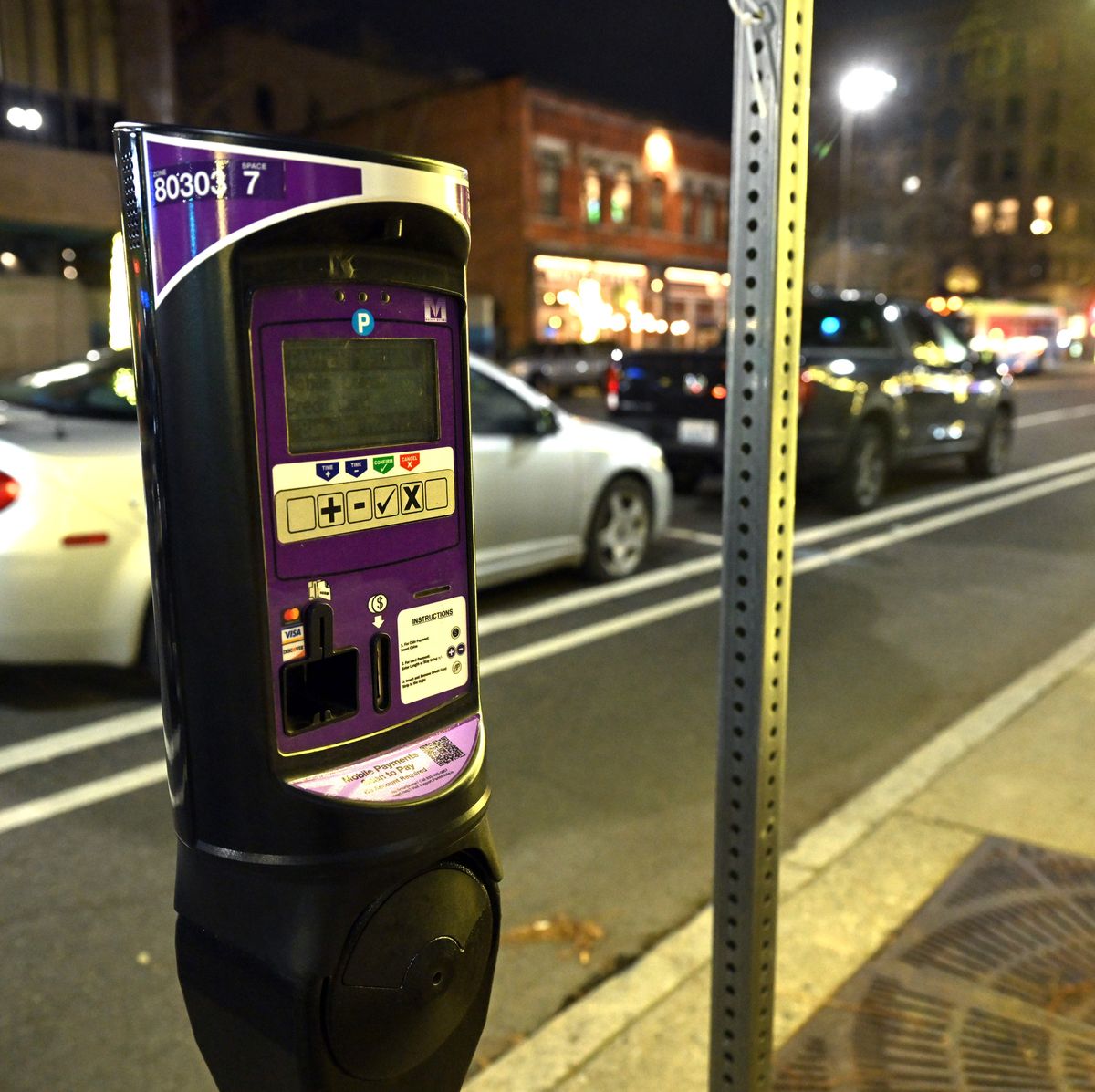Then and Now: Parking meters

Paying for parking in downtown Spokane was controversial from the beginning. Customers of downtown establishments resented paying to leave their cars on the street while merchants acknowledged that it could discourage shoppers.
Parking meters, invented in 1935, were being debated around the country as a way to discourage downtown workers from parking at the curb all day, seen as an inconvenience for business patrons.
Spokane authorized meters in 1939, and challenges began.
In January 1940, Superior Court Judge Charles W. Greenough listened as lawyers argued that owners of adjacent property should control street parking nearby.
Downtown merchant Brooks Kimmel, who owned a hosiery store in the Peyton Building, was trying to stop the meters.
Kimmel’s attorney, A.O. Colburn, argued the landowner should hold sway. “You can not park your auto in the street in front of my house unless I give you consent, and that if I tell you to leave, you must get out.”
Colburn said parking on downtown streets was allowable because of “the sufferance of abutting property owners.”
Bert A. Farley, an attorney for the city of Spokane, said because the city had the right to put up light and telephone poles, the city should be able hire “mechanical policemen,” Farley’s term for this new technology.
Mayor Frank Sutherlin called the meters “glorified alarm clocks.”
A month later, Greenough said city had the right to install parking meters and Kimmel wasn’t being harmed.
Kimmel took his case to the state Supreme Court.
Supreme Court Justice Bruce Blake wrote that charging for parking was necessary because something needed to be done to stop all-day parkers from clogging the downtown.
Blake wrote : “It strikes us that the parking meter is admirably designed to accomplish that result.”
A Spokesman-Review story in March 1941 said members of the Inland Automobile Association approved a six-month trial of meters. Three years earlier, members voted against meters.
Once the legal challenges were out of the way, meters were installed, charging a nickel for one hour of parking. City crews marked 1,200 spaces on downtown streets.
The meters were installed in December 1941 and went into service Jan. 2, 1942.
The Retail Trade Bureau, part of the Chamber of Commerce, asked clerks in stores along the sidewalk to cheerfully provide change to shoppers.